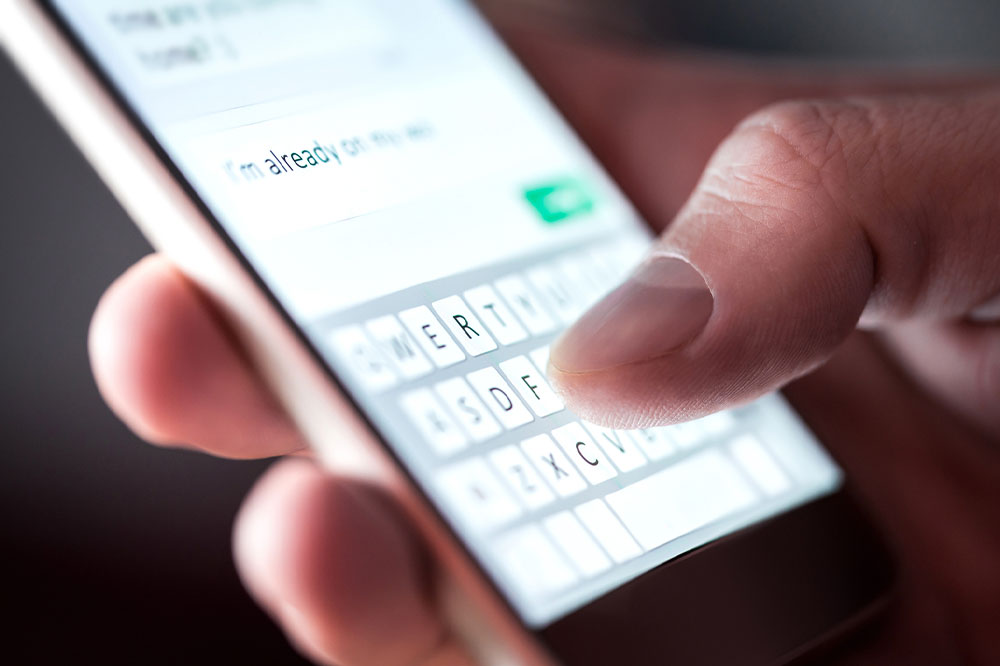Comprehensive Guide to Distinguishing SMS and Instant Messaging in Digital Communication
This comprehensive guide explores the fundamental differences between SMS and instant messaging, discussing their features, advantages, and limitations. It helps users understand which communication method best suits their needs, whether for basic texts or multimedia-rich conversations. The article covers global accessibility, device compatibility, cost considerations, and platform features, offering valuable insights for personal users and businesses alike. Perfect for those seeking to optimize their digital communication strategy, this guide provides clarity on choosing the right messaging tool in today’s interconnected world.

Understanding the Core Differences Between SMS and Instant Messaging
In today's fast-paced digital world, effective communication is more vital than ever. With the proliferation of various messaging platforms, understanding the differences between traditional SMS and modern instant messaging applications can help individuals and businesses optimize their communication strategies. While these terms are often used interchangeably, they actually refer to distinct technologies, each with its own advantages and limitations. This comprehensive guide aims to clarify these differences, empowering you to select the most suitable messaging method for your needs.
What is SMS?
SMS, or Short Message Service, is a text messaging technology that allows users to send brief messages via their mobile carriers. This service is one of the earliest forms of digital communication and remains widely used across the globe. To send an SMS, both sender and recipient need to have active cellular signals, making this method accessible even in areas with limited internet connectivity. Often called "text messaging," SMS is supported on virtually all mobile phones, from the simplest feature phones to advanced smartphones.
Approximately 66% of the global population can receive SMS messages, underscoring its extensive reach. Major wireless providers such as AT&T, Verizon, T-Mobile, and others continually develop enhancements to traditional SMS by integrating new features, transforming it into richer messaging services like Rich Communication Services (RCS). The core features of SMS include:
Compatibility with virtually all mobile phones, including basic feature phones
Does not require an internet connection, relying solely on cellular networks
No need for smartphones or specialized apps
Delivery speed can vary based on signal quality and network traffic
International messaging may incur additional charges depending on your carrier plan
What is Instant Messaging?
Instant messaging (IM) represents a more modern approach to digital communication. It involves real-time exchange of messages via internet-connected applications on smartphones, tablets, or computers. IM platforms support not only text messages but also multimedia sharing—images, videos, voice notes, and even documents—making communication more dynamic and interactive.
Instant messaging applications have gained immense popularity, especially among younger generations and business users. They facilitate instant, multimedia-rich conversations and often include features like group chats, voice and video calls, and file sharing. Some of the most widely used IM platforms include WhatsApp, Facebook Messenger, WeChat, Slack, and Telegram. Features of instant messaging include:
Typically free to use across different regions and countries
Requires stable internet connectivity via Wi-Fi or mobile data
Offers seamless multimedia support, unlike SMS
Enables integration with other applications and services
Supports real-time notifications for incoming messages
Major Differences Between SMS and Instant Messaging
Character Limit: SMS messages are usually restricted to 160 characters, although longer messages can be concatenated. In contrast, most IM apps allow unlimited characters, supporting detailed conversations.
Contact Compatibility: SMS can be sent to any phone number, regardless of whether the recipient uses a compatible messaging app. Instant messaging, however, generally requires both users to be on the same platform or app.
Conversation Structure: SMS tends to be a one-off message or a simple exchange, while IM platforms facilitate continuous, threaded conversations that can incorporate multimedia elements.
Device Compatibility: SMS is compatible with all mobile phones—smartphones or feature phones. Conversely, instant messaging apps need internet-enabled devices like smartphones, tablets, or computers.
Global Reach and Cost: Sending SMS internationally often involves extra fees depending on your carrier plan. IM allows free global messaging as long as you have internet access, making it a cost-effective choice for international communication.
Platform and Features: SMS is a basic service supported by all cell operators. IM platforms offer rich features such as voice and video calls, status sharing, stickers, and file sharing, enhancing both personal and professional communication.
In summary, both SMS and instant messaging serve crucial roles in digital communication, each with unique advantages. SMS's extensive reach and simplicity make it suitable for quick, basic texts, especially in areas with limited internet connectivity. Meanwhile, instant messaging provides a richer, multimedia experience optimized for real-time, engaging conversations with friends, family, or colleagues. Depending on your specific requirements—be it broad accessibility or feature-rich interaction—selecting the appropriate messaging method can significantly enhance your communication effectiveness.





